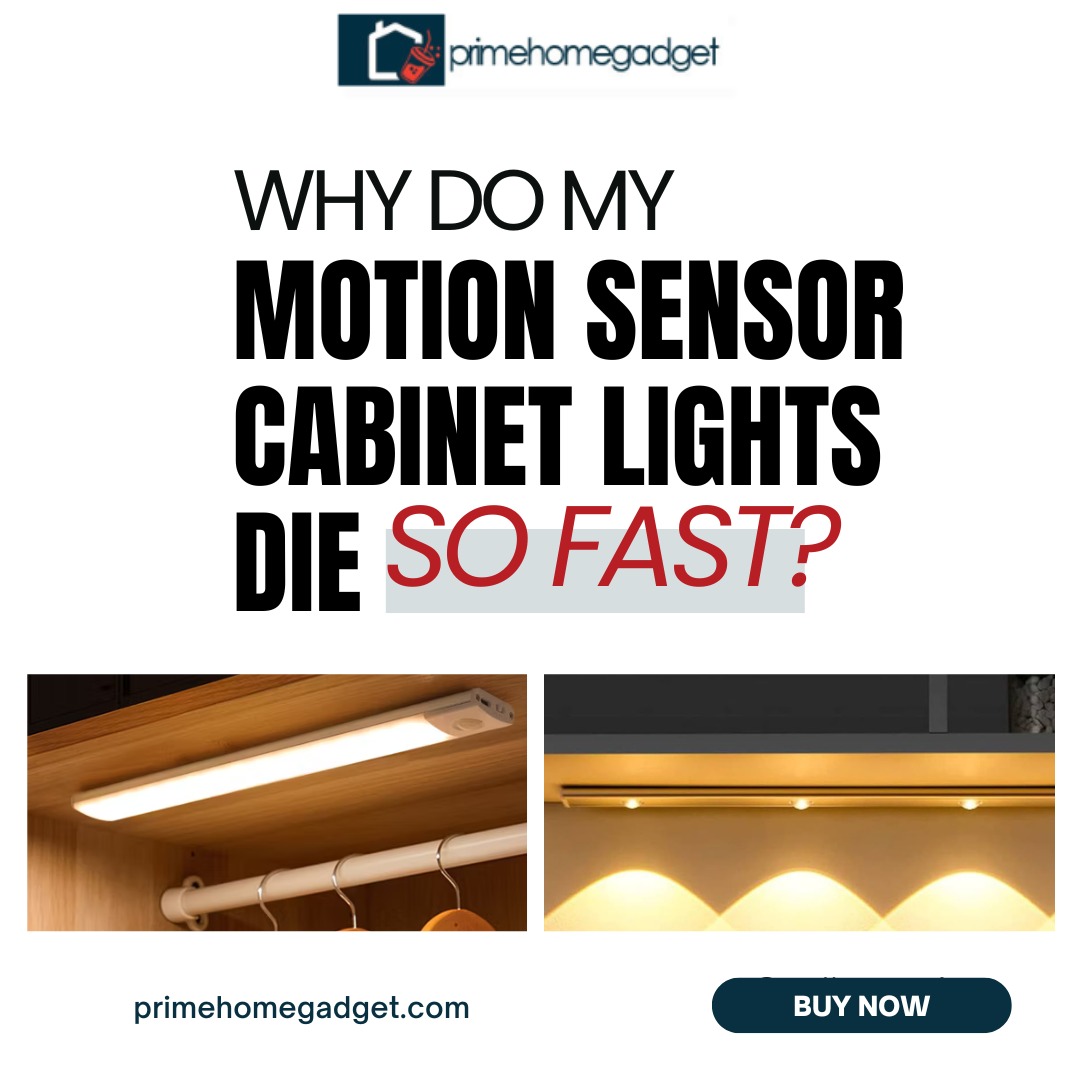You’ve just installed those sleek motion sensor cabinet lights that promised to transform your kitchen into a modern culinary haven. For the first few weeks, everything’s perfect—they illuminate your workspace with a gentle glow every time you approach. Then, suddenly, one by one, they start failing. The frustration is real, and you’re left wondering if you wasted your money on cheap gadgets.
You’re not alone in this struggle. Thousands of homeowners face the same perplexing issue with their motion sensor cabinet lights. While these innovative lighting solutions should theoretically last for years, many seem to give up the ghost within months. The good news? Understanding why this happens can help you choose better products and extend their lifespan significantly.
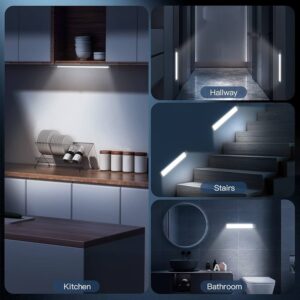
Understanding the Lifespan Problem
Motion sensor cabinet lights combine several technologies—LED bulbs, motion detection sensors, battery systems, and control circuits—all crammed into a compact housing. When any of these components fails, the entire unit becomes useless. Unlike traditional light bulbs that simply burn out, these smart lights can fail in multiple ways, making diagnostics frustrating for the average homeowner.
The promised lifespan of 50,000 hours for LED lights creates unrealistic expectations. In reality, the weakest link in the system often determines how long your lights will actually function. Let’s explore the 15 most common reasons why your motion sensor cabinet lights are dying faster than expected.

15 Reasons Your Motion Sensor Cabinet Lights Fail Prematurely
1. Battery Quality and Type Issues
The most common culprit behind early failure is poor battery quality. Many manufacturers include cheap alkaline batteries that leak corrosive chemicals, damaging internal circuits. Low-quality batteries also provide inconsistent voltage, causing the LED driver circuits to work harder and fail sooner. Rechargeable batteries, while eco-friendly, often have lower voltage outputs that stress the system.
2. Heat Accumulation and Poor Ventilation
LED lights generate less heat than traditional bulbs, but they’re still sensitive to temperature. When installed in enclosed spaces without proper ventilation, heat builds up around the electronic components. This thermal stress accelerates component degradation, particularly affecting the motion sensor’s infrared detector and the LED driver circuitry.
3. Moisture and Humidity Damage
Kitchens and bathrooms are humid environments, and most cabinet lights aren’t designed for these conditions. Moisture infiltration corrodes connections, shorts circuits, and causes adhesive failures. Steam from cooking or showering can penetrate even seemingly sealed units, leading to premature failure.
4. Cheap LED Driver Circuits
The LED driver circuit regulates power to the LEDs and is often the first component to fail. Budget manufacturers use low-quality capacitors and resistors that can’t handle voltage fluctuations. These components degrade quickly, causing flickering, dimming, or complete failure.
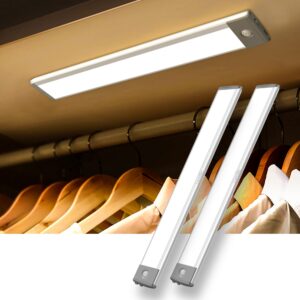
5. Overuse and Frequent Cycling
Motion sensors that trigger too frequently put stress on the entire system. If your lights activate dozens of times per day due to pets, air currents, or overly sensitive settings, the constant on-off cycling wears out the electronic components faster than continuous operation would.
6. Poor Manufacturing Quality Control
Mass-produced lights often suffer from inconsistent quality control. Solder joints may be weak, components might be incorrectly rated, or assembly processes could introduce defects. These manufacturing flaws don’t always manifest immediately but cause premature failures weeks or months later.
7. Adhesive Mounting Failures
Many motion sensor lights use adhesive strips for mounting. When these strips fail due to heat, humidity, or surface contamination, the lights can fall and suffer impact damage. Even if they don’t fall completely, loosened mounts can stress internal connections.
8. Voltage Fluctuations and Power Issues
Battery-powered lights are susceptible to voltage drops as batteries discharge. Some units don’t handle these fluctuations well, causing erratic behavior and component stress. Rechargeable units may also suffer from poor charging circuits that overcharge or undercharge batteries.
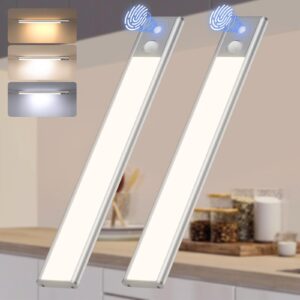
9. Sensor Contamination and Interference
Motion sensors use infrared detection that can be blocked by dust, grease, or other contaminants common in kitchens. When sensors work harder to detect motion through contamination, they consume more power and generate more heat, accelerating failure.
10. Inadequate Waterproofing
Even lights marketed as “water-resistant” often lack proper sealing. Kitchen environments expose lights to grease, steam, and cleaning chemicals that can penetrate housings. Once moisture enters, corrosion quickly destroys electronic components.
11. Incompatible Battery Chemistry
Mixing different battery types or brands can cause voltage imbalances and chemical reactions. Some lights are designed for specific battery chemistries, and using alternatives can cause premature failure or safety issues.
12. Software and Firmware Bugs
Modern motion sensor lights often include microcontrollers with firmware. Bugs in this software can cause lights to malfunction, fail to enter sleep mode properly, or respond incorrectly to sensor inputs, leading to premature component wear.
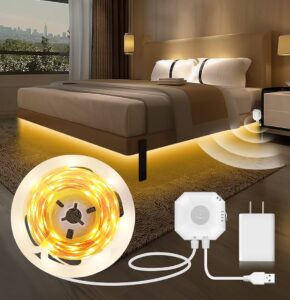
13. Vibration and Mechanical Stress
Cabinet doors slamming, kitchen appliances operating, or general household vibrations can stress solder joints and connections in cheaply made lights. Over time, these mechanical stresses cause connections to fail.
14. Temperature Extremes
Extreme cold or heat can damage electronic components. Lights installed near ovens, dishwashers, or in unheated spaces may experience temperature swings that exceed their design specifications, causing premature failure.
15. End-of-Life Component Degradation
All electronic components have finite lifespans. Capacitors dry out, LEDs gradually dim, and sensors lose sensitivity over time. While individual components might last years in ideal conditions, the combination of multiple components in a challenging environment accelerates overall system degradation.
Extending Your Motion Sensor Light Lifespan
Understanding these failure modes helps you make better purchasing decisions and extend your lights’ operational life. Look for lights with higher IP ratings for moisture protection, quality battery compartments with corrosion resistance, and manufacturers with good warranty support.
Regular maintenance also helps. Clean sensors monthly, check battery levels regularly, and ensure proper ventilation around mounted lights. Consider investing in higher-quality batteries and avoid mixing different battery types.
Making Smart Purchasing Decisions
When shopping for replacement motion sensor cabinet lights, prioritise quality over price. Look for units with robust construction, proper sealing, and positive user reviews mentioning longevity. Consider the total cost of ownership, including battery replacements and potential early failures.
Motion sensor cabinet lights die fast due to a combination of environmental challenges, component quality issues, and design compromises. By understanding these 15 common failure modes, you can make informed decisions about which products to buy and how to maintain them properly.
Don’t let past disappointments discourage you from enjoying the convenience of motion-activated lighting. With the right knowledge and careful product selection, you can find reliable motion sensor cabinet lights that provide years of dependable service.
Ready to upgrade to better motion sensor cabinet lights? Head over to Amazon to browse their extensive selection of high-quality options with verified customer reviews and competitive pricing. Your kitchen deserves lighting that works as hard as you do.
Top Amazon Brands for Motion Sensor Cabinet Lights To Consider
- EZVALO 5 Pack Under Cabinet Lighting, Rechargeable Motion Sensor Light
- BLS LED Closet Light, T401 Super Bright Wireless Under Cabinet Motion Sensor Light
- AIBOO Under Cabinet Lighting, Dimmable 12 inch Under Counter Lights
- EShine Hand Wave Activated Under Cabinet LED Lighting
- LEPOTEC Under Cabinet Motion Sensor Light

